Japanese people are known to live longer than any other population in the world. Owe it to the food, lifestyle, culture, or a combination of all three – clearly, there’s something right about the Japanese way of being.
The primary cause behind the country’s long life expectancy is most often attributed to the Japanese diet. A Japanese diet is nutritionally balanced and low in fat. It combines numerous raw and cooked ingredients, both fermented and fresh.
A typical meal revolves around a staple, main dish, and side dishes. This provides an array of nutrients and nourishment for the body. Japanese cooking techniques, including basic cooking methods, have contributed massively to its diet.
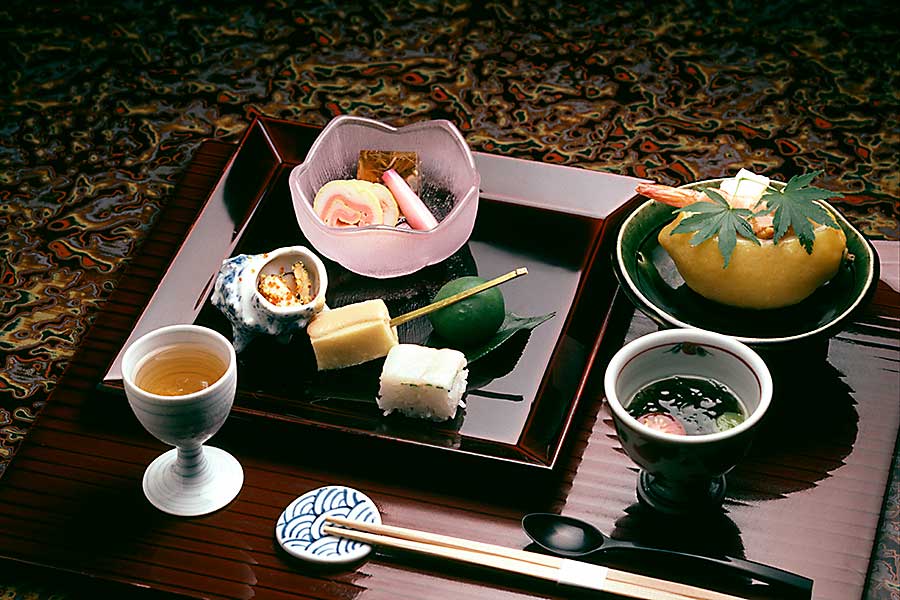
Japanese cuisine is refined, has terrific presentation, and keeps things simple while maximising flavour. Most Japanese meals use domestic produce, such as locally sourced rice, seafood, seaweed, soybeans, and vegetables. And when it comes to technique, nobody combines precision with simplicity quite like the Japanese.
Japanese cuisine offers meticulous attention to detail and balance. It is deeply intertwined with its cooking methods, elevating fresh ingredients’ inherent flavours. Techniques such as sushi making, which requires years of training to perfect, showcase the precision and discipline in Japanese culinary arts.
Another hallmark technique, tempura frying, highlights the importance of timing and temperature control to achieve a light, airy batter that doesn’t overpower the delicate taste of the ingredients. These methods are not just about cooking; they’re a form of art that respects the produce’s natural beauty and flavour, making Japanese cuisine one of the most revered in the world.
Let’s look at Japanese cuisine and the cooking techniques behind this country’s magnificent foods.
How to prepare traditional Japanese foods
In Japanese cuisine, the dining table combines various foods cooked and prepared differently, often utilizing the five basic cooking methods. This provides a rich variety of foods that make for a well-balanced meal that’s flavoursome yet not too high in calories.
There are ten main methods used when preparing Japanese foods:
Grilling
Grilling is a cooking method that involves grilling foods over a direct or indirect flame, at a distance, and high temperatures.
Stews
When preparing a Japanese stew, the foods are seasoned as cooked.
Raw foods
Uncooked foods, such as sashimi (raw fish) pickled or vinegared, can be served as is.
Deep frying
Deep frying is used in a wide variety of Japanese side dishes. Deep frying is done using different methods, usually 150-200-degree oil.
Hitashimono
Hitashimono method of preparation steeps vegetables or beans in a tasty flavoured sauce.
Steaming
A cooking method that treats food by boiling water and using steam to cook it lightly.
Boiling
Boiling is most often used to prepare noodles, which can be made from buckwheat or wheat flour.
Aemono
Aemono is a cooking method that smothers fish and vegetables in various sauces, usually miso, sesame seed, or vinegar.
Soup
Japanese soups, such as miso and noodles, are clear and thick and often prepared with dashi as a base. Dashi refers to various stocks used in Japanese cuisine to impart a characteristic umami flavour.
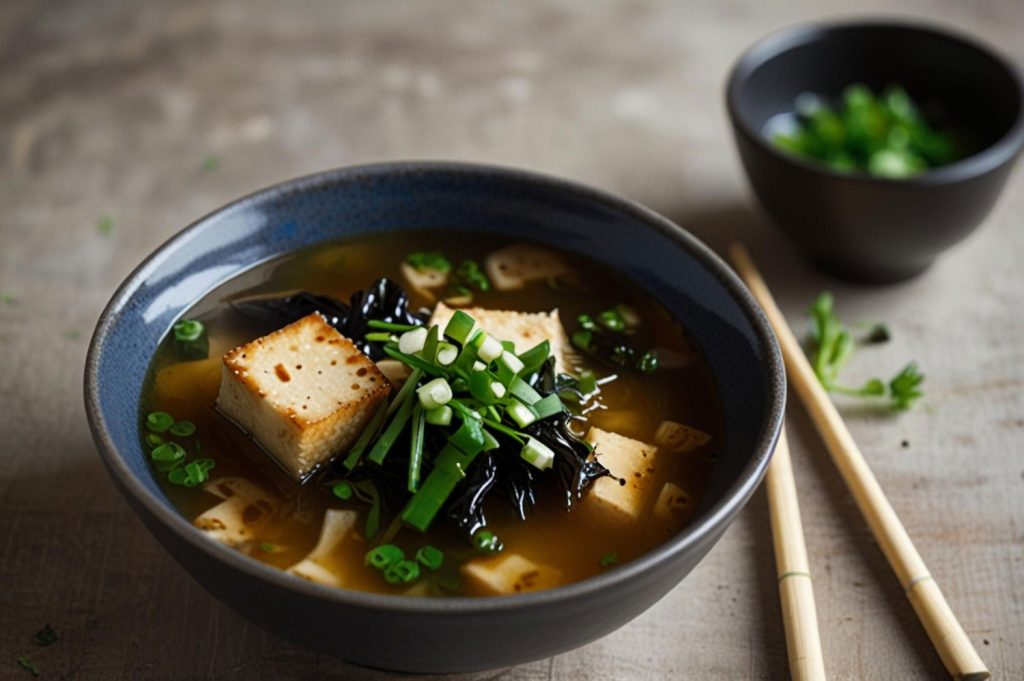
The most common form of dashi is made with kombu (edible kelp) and bonito flakes, shavings of smoked, fermented skipjack tuna. Alternatively, dashi can be made with dried sardines or anchovies.
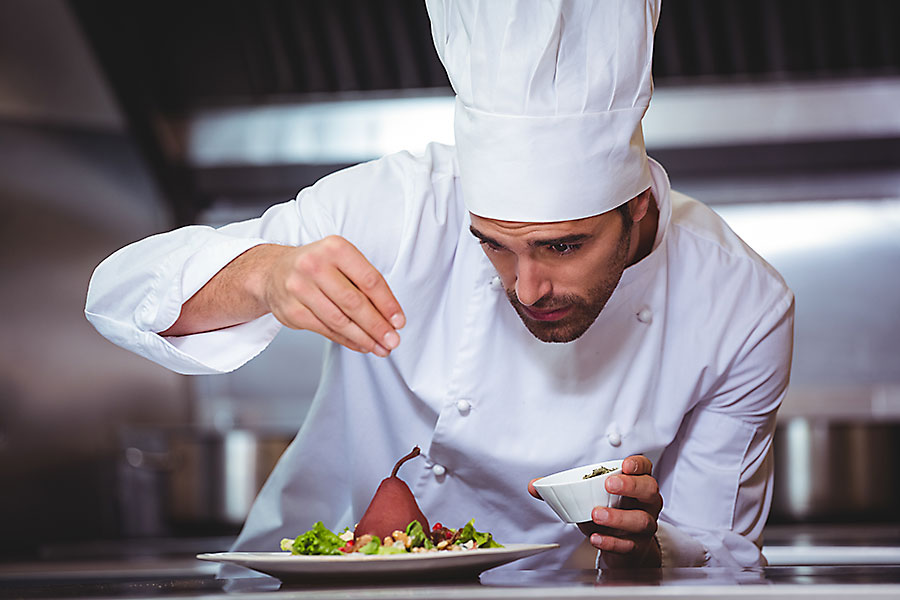
Fine Dining with A Private Chef
Pickling
Japanese foods can be pickled via lactic acid fermentation or by immersing the food products in salt.
Essential tools used in Japanese kitchen
With these preparation methods in mind, let’s examine the must-have tools for Japanese cooking. You can’t make real Japanese food without them.
Many of the Japanese cooking techniques we will learn about require the use of various tools and instruments. A well-equipped Japanese kitchen will have the tools to execute these techniques perfectly. These include:
- Grater – many aspects of Japanese cuisine require the use of a good grater, particularly side dishes such as grated daikon, wasabi, or ginger. Different graters are used for different vegetables and needs, though oroshigane is the traditional Japanese grater.
- A great knife – we all know that Japanese knives are amongst the best in the world, and with these knives comes a whole host of special knife techniques used in Japanese cooking. Different knife techniques give vegetables different tastes and textures, contributing to the final recipe’s result. Japanese knife techniques could make up their entire article, but for now, they know that cooking Japanese food requires a great knife.
- Donabe is a type of pot made from Japanese clay. It can withstand high amounts of direct heat and is usually used to cook nabe, though it can also be used for soups, noodles, and frying.
- Mortar & pestle – traditional Japanese mortar is made from unglazed ceramic with several grooves in its centre, and pestles are made from wood. Thanks to the scores on the mortar, freshly grinding ingredients such as sesame seeds does not take nearly as long as it would on a smooth mortar. You’ll want freshly ground ingredients to give dishes a much richer flavour and aroma—use them for sauces and dressings.
- Chopsticks – chopsticks are used not only for eating but also for cooking. Also known as Hashi, cooking chopsticks are longer than eating chopsticks. This added length helps to protect hands from the heat of the food being cooked. Metal chopsticks with wooden handles are used for frying, and pure metal chopsticks are used for arranging and serving food. Chopsticks are also used to quickly whisk food items, such as when you add miso to dashi.
- Bamboo rolling mats. There’s only one way to make sushi: with a bamboo rolling mat. Also known as makisu, these mats are made from bamboo slats connected with cotton strings.
- Otoshi-buta – a type of wooden lid that is used when simmering particular foods, such as fish. These specially designed lids evenly distribute the temperature so that the simmered liquid cooks evenly. They allow a pot to remain partly open to prevent boiling and keep food at a simmer. Before using otoshi-buta, you must first soak the lid in water to prevent the steam from the simmering liquids from soaking through and leaving behind its fragrance.
Most popular Japanese cooking techniques
Considering the essential tools and different preparation methods, let’s examine Japanese cuisine’s most popular cooking methods.
Delving into the heart of Japanese cuisine reveals a world where culinary precision meets simplicity, creating dishes as aesthetic as delicious. At the core of these delectable creations are the cooking techniques honed over centuries and deeply rooted in tradition.
These methods, from the slow simmering of ingredients under an otoshi-buta to the rapid sear of meats on a teppan, showcase the meticulous care and respect for ingredients that Japanese chefs embody. As we further explore these popular cooking techniques, we’ll uncover the secrets behind the flavours and textures that make Japanese food uniquely captivating.
1. Nabemono
Nabemono is not so much a technique as a term for a range of Japanese dishes or hot pots. The term comes from the words ‘nabe’, which refers to the Japanese clay pot in which the ingredients are usually cooked, and ‘mono’, which means things and refers to the variety of ingredients used in nabemono dishes.
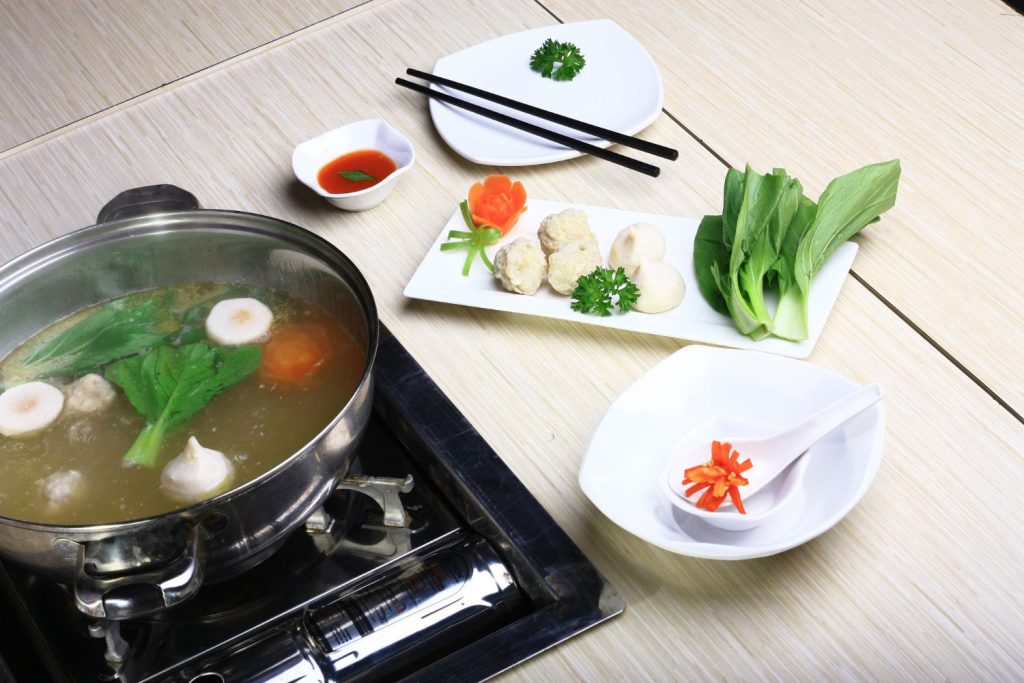
Nabemono meals are typically served as a sizzling broth alongside a tray of raw ingredients. This is usually placed at the centre of the table and designed to be eaten communally by all diners. People can choose their preferred ingredients and add them to the broth, cooking until tender.
What is served with nabemono?
You’ll typically see nabemono dishes served with dashi broth, sake, and soy sauce, adding numerous ingredients, including seafood, meats, vegetables, tofu, and noodles. A traditional Japanese paste called yuzukosho is often also served alongside nabemono.
This condiment is made from fermented yuzu skins, salt, and green chillies and has a distinctly sour, acidic, and spicy taste. Another condiment traditionally served alongside nabemono dishes is ponzu, a type of vinaigrette made from a mix of rice vinegar, citrus juice (e.g., yuzu, lemon, or lime), and other ingredients such as sugar, mirin, seaweed, dashi stock, or soy sauce.
The liquid condiment is often used as a dipping sauce or poured into the nabemono to add a tangy flavour to the dishes.
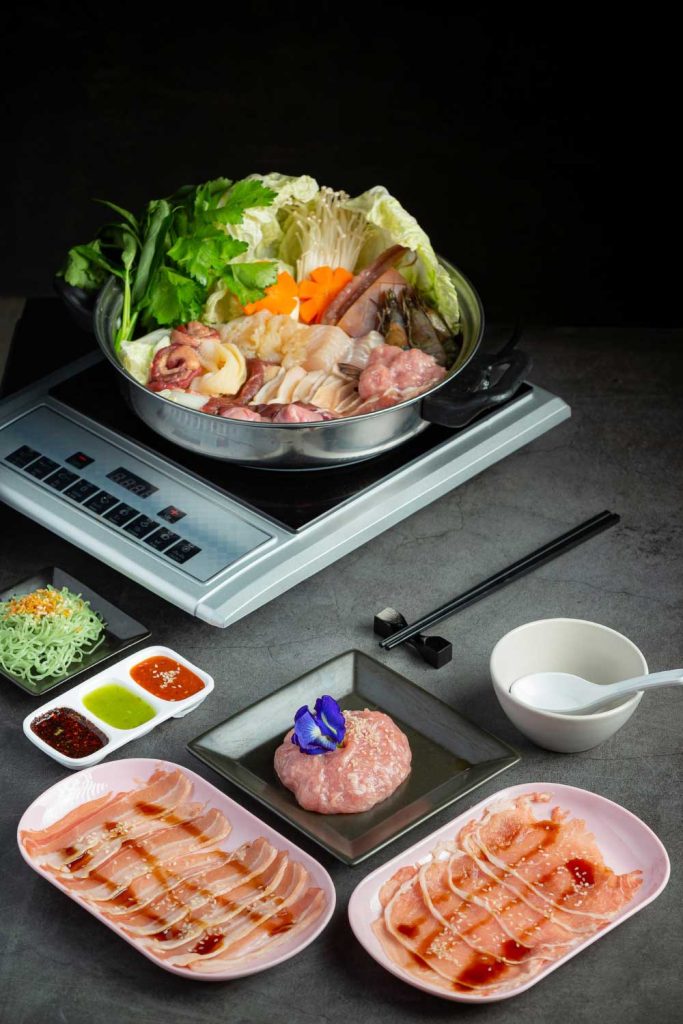
Typical vegetables served alongside nabemono include cabbage, mushroom, daikon radish, eggplant, onion, spinach, and leeks. Popular nabemono dishes include chirinabe, a one-pot dish combining fish, vegetables, and tofu, and konoko nabe, which uses mushrooms as the star ingredient.
2. Nimono
Nimono is one of the five cooking methods in Japanese cuisine. It is used to prepare almost every meal except breakfast, and it is almost always used when preparing vegetables.
It is also one of the primary techniques used to prepare fish, tofu, and other seafood. Nimono dishes are usually cooked in a heavy, covered pot, allowing heat to spread evenly throughout the ingredients as they simmer.
The nimono technique first parboils or blanches the ingredients in water. After that, they are slowly cooked in stock until the liquid has almost fully evaporated or absorbed into the ingredients.
The stock used to cook nimono dishes is called shiru and is typically a combination of soy sauce, dashi, mirin, and sake. The stock can also be flavoured with miso, vinegar, sugar, and salt. Once the ingredients have absorbed the stock, they are simmered before serving. Tender and full of flavour!
3. Teriyaki
This is arguably one of the most popular techniques in traditional Japanese cooking and a favourite worldwide. Teriyaki is a cooking technique in which ingredients are first marinated in a special sweet teriyaki sauce and then grilled, broiled, or roasted. Teriyaki sauce is made from soy sauce, mirin, and sugar.
The term teriyaki combines the words ‘teri’, which means lustre, and ‘yaki’, which refers to grilling or broiling. The lustre undoubtedly refers to the shiny, glossy appearance of foods cooked using this technique. Teriyaki is traditionally used to cook meat dishes such as beef, chicken, or pork. It can also be used to prepare seafood.

Fine Dining with A Private Chef
4. Yakiniku
Although it has Korean origins, yakiniku is a popular technique in Japanese food culture. It involves cooking bite-sized pieces of meat and vegetables over a table grill. The term yakiniku itself means ‘grilled meat’. While similar to the popular Korean dishes of bulgogi and galbi, this technique differs in that the meats used are usually not marinated before grilling.
Yakiniku is comparable to eating Korean BBQ. A tray of thinly sliced raw meats and vegetables will be delivered to the table, and diners will grill the ingredients on a tabletop griddle.
The most popular meats for yakiniku are pork, beef, chicken, and shellfish. Cuts used for yakiniku include beef loin and chuck, short ribs, tongue, and pork belly. Offal, such as beef liver, intestine, hearts, tripe, and pork stomach, are also used. Since meats are usually not marinated beforehand, yakiniku is traditionally served alongside numerous dips and sauces. These include miso, soy sauce, and garlic oil sauce.
5. Kushiyaki
Kushiyaki is a Japanese cooking method that involves skewering and grilling meat, seafood, vegetables, and tofu. Food prepared using this method is grilled over charcoal on bamboo skewers.
The ingredients will come seasoned in two ways: salty or salty-sweet. The salty variety is seasoned with plain salt. The salty-sweet varieties are marinated in tare, soy sauce, mirin, sake, and sugar sauce. Kushiyaki can also be flavoured with herbs and spices like cayenne pepper, wasabi, and shichimi.
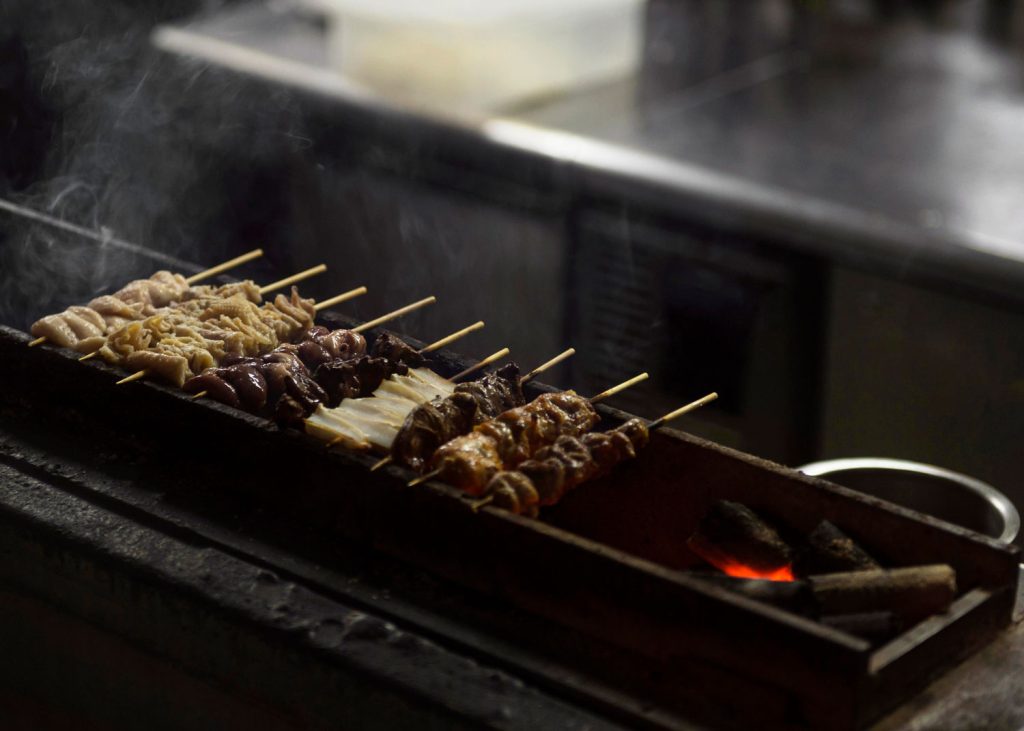
Kushiyaki foods are typically prepared fresh and served immediately. They are usually served alongside various sides, such as edamame, pickled vegetables, and salads. Yakitori is the most popular type of kushiyaki.
It is often made using chicken cutlets or offal, such as hearts or kidneys. Besides chicken, meat kushiyaki is often made from beef, pork, horse meat, and cartilage. Seafood kushiyaki typically uses prawns, shrimp, sardines, scallops, sweetfish, Atlantic horse mackerel, and cuttlefish. Vegetables used in kushiyaki are usually Japanese eggplant, green capsicum, onion, potato, ginkgo nut, pumpkin, and cherry tomato.
6. Tataki
This cooking technique is most often used to prepare meat or fish. The tataki technique quickly sears the food product and then takes it off the heat to be sliced and served while still raw in the middle. Tataki is often used to cook tuna steak and beef tenderloins, as those cuts allow for even searing.
When cooking with the tataki technique, the food is first seared quickly on all sides. Then, it is taken off the heat and placed in an ice bath to halt the cooking process.
Then, the product is thinly sliced and arranged nicely on a flat platter to be served. You’ll often see tataki-prepared foods served alongside sashimi dishes. You’ll often see tataki foods alongside a glass of Junmai, a specific type of sake.
7. Agemono
Agemono is the Japanese technique of deep frying foods and encompasses three different frying methods:
- Karaage – In this technique, foods are first coated in flour or arrowroot starch before frying. This preserves the ingredients’ natural water content and allows a crispy outer surface to form. Karaage foods can also be coated with wheat flour, tapioca, or potato starch. Each coating produces a distinct result. Tatsutaage is a variant of karaage that involves marinating chicken in a mixture of soy sauce, sake, and sugar. The chicken is then coated in arrowroot starch before frying.
- Koromogae – this includes foods such as tempura. Koromogae is typically used when preparing seafood, fish, and certain vegetables. The technique refers to ingredients that are battered before frying.
- Suage – foods that are fried without a coating or batter. The suage technique is used when preparing freshwater fish, eggplants, capsicum, and other vegetables with a vibrant colour or texture that holds well after frying.
The mono technique is also used when preparing korokke, or croquettes. These traditional deep-fried patties are usually served as a popular snack. They typically contain mashed potato or a white-based sauce mixed with seafood, vegetables, or minced meats. Tonkatsu is another type of mono, made from deep-fried pork cutlets coated in breadcrumbs. It is a staple among traditional Japanese foods.
8. Tempura
While tempura can fall under the koromogae umbrella of battered fried foods, it is a Japanese technique that deserves its mention. Tempura batter foods are simple, elegant, and packed full of flavour. These battered fried foods are usually made with vegetables or seafood.
Vegetables include mushrooms, snow peas, and Japanese eggplant; popular tempura seafood includes prawns, scallops, and crab. The batter used in preparation is essential to tempura. It is made from a combination of flour, eggs, and water.
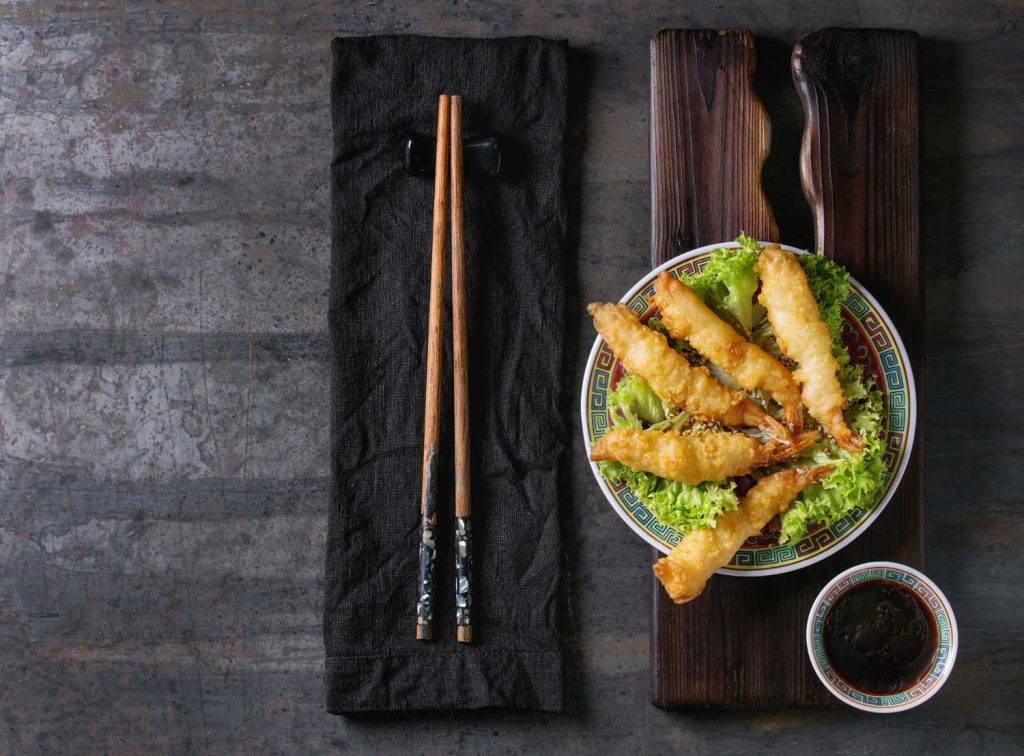
This is made in a specific ratio that is not overpowering and keeps the ingredients moist and full of natural flavour. Tempura dishes are usually served with shredded ginger, daikon radish, and tentsuyu. This special dipping sauce is made from dashi stock, soy sauce, and mirin.
Tempura dishes are often served alongside traditional items like miso soup, enhancing the overall dining experience, and they are an established part of traditional Japanese cuisine.
9. Teppanyaki
Most people associate teppanyaki with food thrown on our plates by a chef. However, the term teppanyaki refers to the Japanese cooking technique of grilling foods on an iron hot plate. ‘Teppan’ means iron plate, and ‘yaki’ refers to grilling.
This cooking technique is also known as hibachi in some countries. Many dishes can be prepared using the teppanyaki method, including rice, vegetables, seafood, meats, noodles such as yakisoba, and even okonomiyaki, a savoury pancake. Soybean oil is usually used when cooking teppanyaki foods.
In Western restaurants, teppanyaki cooking is an entire experience. The chef typically cooks various foods on the iron griddle in front of diners and tosses the food items onto individual bowls when serving. Teppenyaki foods are often served with a range of side dishes. These could include garlic chips, fried rice, mung bean sprouts, and various dipping sauces, though only soy sauce is used in Japan.
Corporate catering with a private chef.

Explore Japan’s variety of cooking and Japanese food culture.
The cooking techniques explored above are enough to give you an idea of the versatility and diversity of Japanese food culture. But to truly experience Japanese cuisine, you’ll have to dive into its various regions and all their variations.
Experience the best that Japan offers with our Japanese food experience, which will guide you through several courses on Japan’s best dishes. You can choose the foods or regions you’d like to explore or let your chef guide you through a taste adventure showcasing the best the country offers.
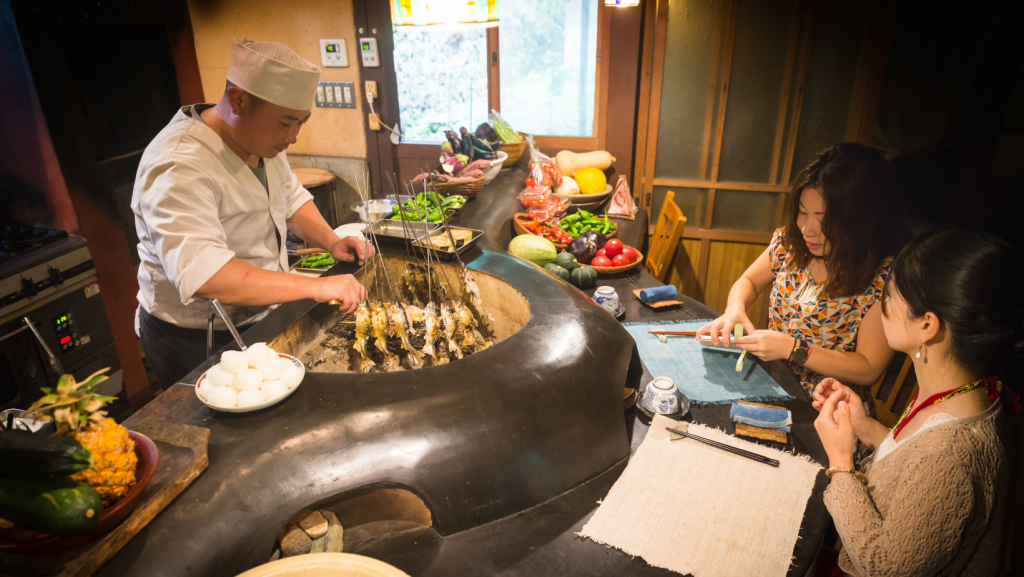
For a truly unique luxury Japanese food experience, try the 12-course omakase. This meticulously crafted degustation-style feast is curated by a Head Chef and paired with a mixologist-designed drink. It’s Japanese fine dining at its best. Contact our team to design your Japanese food adventure now.